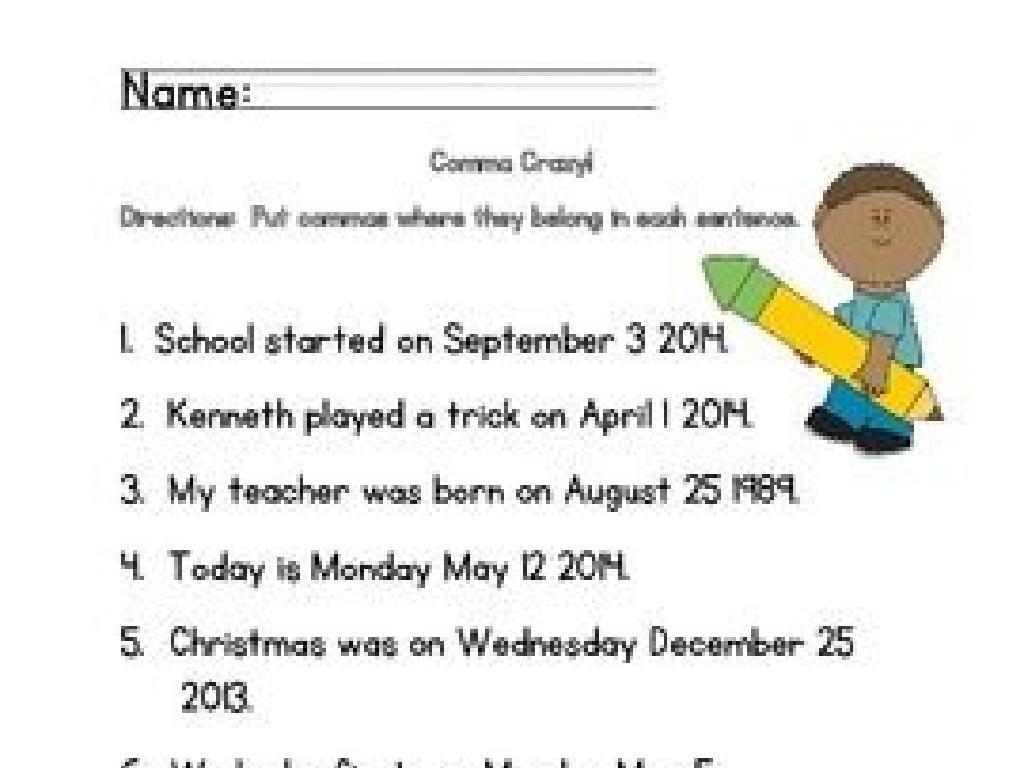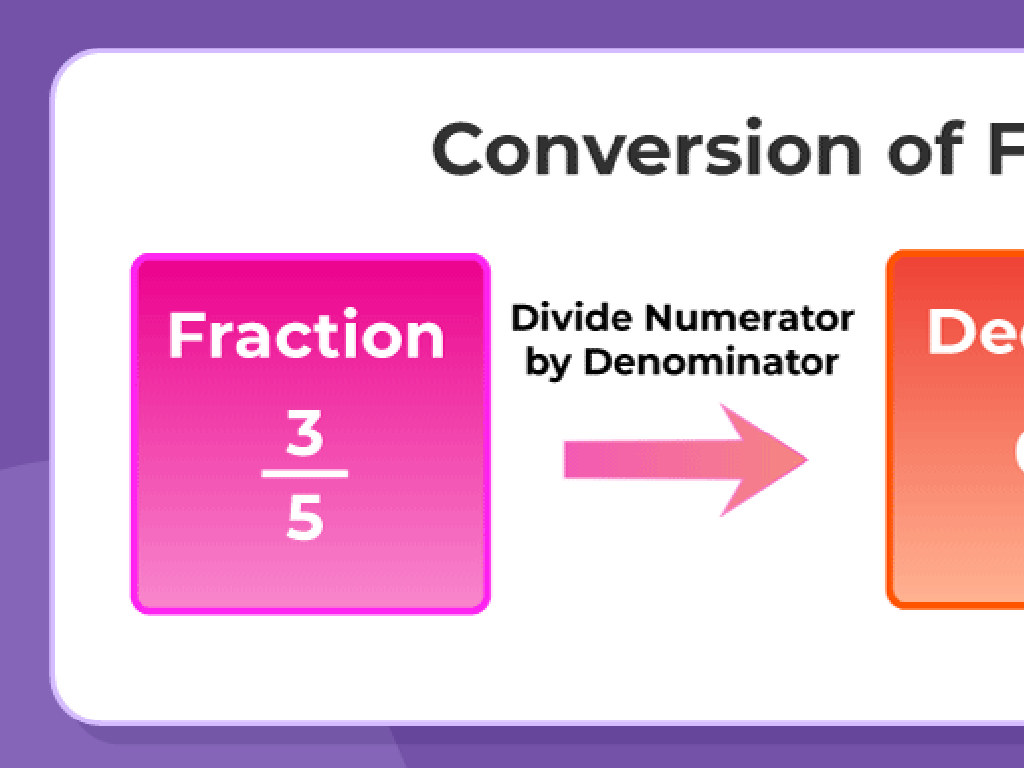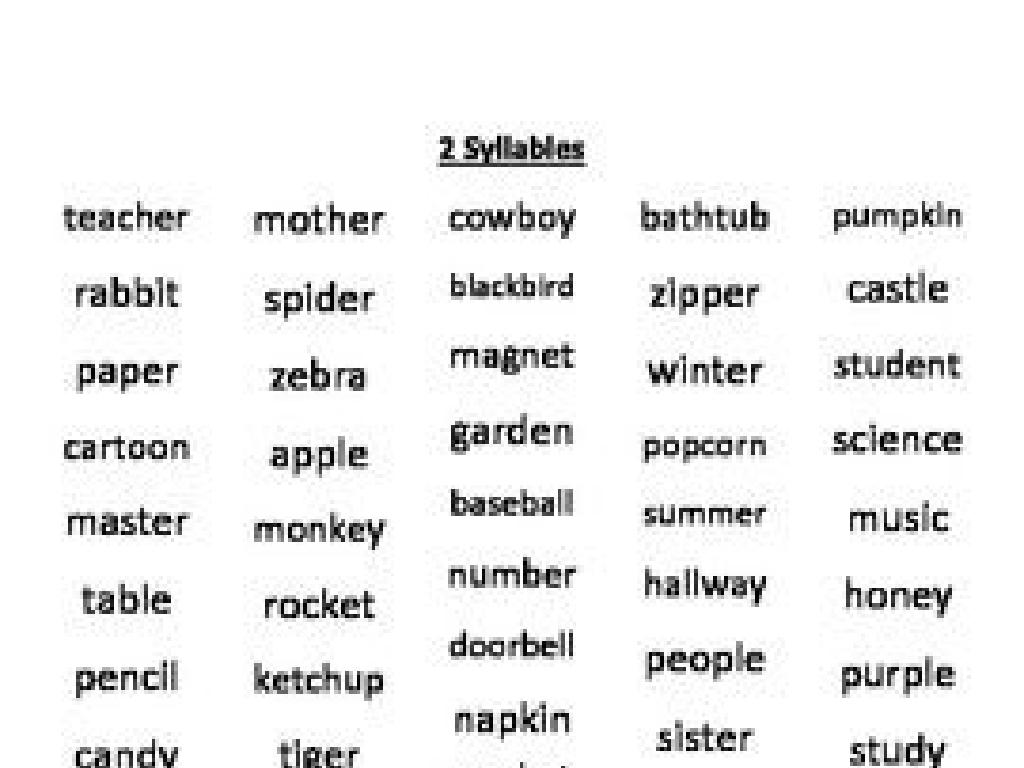Explore Energy Transformations: Bike Ride
Subject: Science
Grade: Sixth grade
Topic: Kinetic And Potential Energy
Please LOG IN to download the presentation. Access is available to registered users only.
View More Content
Introduction to Energy: Kinetic and Potential
– Energy: The ability to do work
– Energy is what we need to move or change things.
– Types of energy: Kinetic & Potential
– Kinetic energy is motion energy; potential energy is stored energy.
– Energy transformation examples
– A roller coaster at the top has potential energy which turns into kinetic energy as it descends.
– Observing energy in a bike ride
– While riding a bike, pedaling converts your kinetic energy into the bike s motion.
|
Begin the lesson by defining energy as the capacity to perform work, such as moving an object. Explain that there are various forms of energy, with kinetic and potential being the primary focus. Kinetic energy is the energy of motion, observable when objects are moving. Potential energy is stored energy, present when objects have the potential to move but are stationary. Use real-life examples like a roller coaster to illustrate energy transformations from potential to kinetic energy. Relate the concept to a common experience like riding a bike, where the rider’s energy is transformed into the bicycle’s kinetic energy. Encourage students to think of other examples where they can observe kinetic and potential energy in their daily lives.
Exploring Kinetic Energy
– Kinetic energy defined
– Energy an object has due to its motion
– It’s the energy of motion
– Cycling as kinetic energy
– When you pedal, your bike moves – that’s kinetic energy at work
– Everyday examples
– Running, falling leaves, flowing river
|
Kinetic energy is a fundamental concept in understanding energy transformations, especially in a practical context like riding a bike. Begin by defining kinetic energy as the energy possessed by an object in motion. Use relatable examples to illustrate the concept, such as cycling, where the energy from pedaling is transformed into the motion of the bike. Discuss other everyday examples to solidify understanding, like running, which involves converting energy into motion. Encourage students to think of more examples and to observe kinetic energy in action in their daily lives.
Understanding Potential Energy
– Define potential energy
– Energy that is stored and held in readiness
– Energy stored by position
– Higher the position, more the stored energy
– Example: Ball on a hill
– Gravity’s pull gives the ball potential energy
– Example: Stretched rubber band
– Elastic potential energy is in the stretched band
|
Potential energy is the energy that an object has because of its position relative to other objects. It’s like having energy ready to go! When we talk about a ball at the top of a hill, it has gravitational potential energy because of its high position. If it rolls down, that potential energy will convert into kinetic energy, which is the energy of motion. Similarly, a stretched rubber band has elastic potential energy because of its stretched position. When released, it snaps back to its original shape, converting potential energy into kinetic energy. Encourage students to think of other examples where potential energy might be present in their daily lives and how it might transform into kinetic energy.
Energy Transformations During a Bike Ride
– Energy can change forms
– Like a cyclist at the top of a hill ready to speed down
– Potential to kinetic energy
– As you pedal downhill, potential energy converts to kinetic
– Kinetic to potential energy
– Going uphill, your kinetic energy turns into potential
– Conservation of Energy law
– Energy is not lost, just transformed
|
This slide introduces the concept of energy transformations, focusing on a practical example of a bike ride. Begin by explaining that energy can be stored or active, known as potential and kinetic energy, respectively. Use the analogy of a cyclist at the top of a hill (potential energy) who begins to ride down (transforming into kinetic energy). As the cyclist pedals up the next hill, the kinetic energy is converted back into potential energy. Emphasize the Law of Conservation of Energy, which states that energy in a closed system is neither created nor destroyed, only transformed. Encourage students to think of other examples where they observe energy changing from one form to another in their daily lives.
Energy Transformations: Bike Ride
– Bike riding demonstrates energy change
– Pedaling uphill increases potential energy
– As you climb, your energy is stored for later use
– Coasting downhill changes potential to kinetic
– When descending, stored energy converts to motion
– Energy transformation is continuous
|
This slide introduces students to the concept of energy transformations through the relatable activity of riding a bike. Begin by explaining that energy can change forms but is never lost, using the example of a bike ride to illustrate this principle. When a rider pedals uphill, they are working against gravity, and their potential energy increases. This energy is stored until they begin to coast downhill, at which point the potential energy is transformed into kinetic energy, propelling the bike forward. Emphasize that this is a clear example of the Law of Conservation of Energy. Encourage students to think of other examples where they have experienced potential and kinetic energy in their daily lives.
Calculating Energy on a Bike Ride
– Kinetic Energy (KE) formula
– KE = 1/2 mv^2, where m is mass, v is velocity
– Potential Energy (PE) formula
– PE = mgh, where m is mass, g is gravity, h is height
– Variables in energy formulas
– m = mass, v = velocity, h = height, g = gravity (9.8 m/s^2)
– Solving energy problems
– Use formulas to calculate energy during a bike ride
|
This slide introduces students to the mathematical aspect of energy transformations during a bike ride. The kinetic energy formula KE = 1/2 mv^2 calculates the energy of motion, where ‘m’ stands for mass and ‘v’ for velocity. Potential energy, given by PE = mgh, represents the energy stored due to an object’s position above the ground, with ‘h’ being the height and ‘g’ the acceleration due to gravity. Students should understand each variable and how to apply these formulas to solve problems. For example, calculating the kinetic energy of a cyclist at different speeds or the potential energy when at the top of a hill. Encourage students to bring examples of different masses and heights to see how these affect energy calculations.
Energy Conservation in Action: Roller Coasters
– Roller coasters and energy conservation
– Roller coasters demonstrate conservation of energy by converting potential energy to kinetic energy and vice versa.
– Spotting max potential and kinetic energy
– The highest points have maximum potential energy; the lowest points have maximum kinetic energy.
– Energy transformation, not creation
– Energy changes form, like potential to kinetic, but the total amount of energy remains constant.
– Understanding the law of energy conservation
|
This slide introduces the concept of energy conservation through the thrilling example of roller coasters. It’s crucial to explain that as the coaster climbs, it builds potential energy, which is then converted to kinetic energy as it descends. At the top of a hill, potential energy is at its peak, and as the coaster races down, that energy transforms into kinetic energy, propelling the coaster forward. Emphasize that energy is not lost in this process; it merely changes form, illustrating the law of conservation of energy. This law states that energy cannot be created or destroyed in an isolated system. Engage students by asking them to think of other examples where they observe energy transformation in their daily lives.
Class Activity: Energy Scavenger Hunt
– Find kinetic & potential energy examples
– Kinetic: a rolling ball; Potential: a book on a shelf
– Observe energy transformations
– How does a ball gain/lose kinetic energy?
– Discuss findings with classmates
– Present your energy discoveries
– Share what you’ve learned about energy
|
This activity is designed to help students identify and understand kinetic and potential energy in real-world contexts. Students will search around the school for examples of both types of energy, such as a swinging pendulum (kinetic) or a compressed spring (potential). They should observe and note how energy transforms from one form to another, like a ball being dropped (potential to kinetic). Encourage students to discuss their observations in groups to deepen their understanding. Finally, each group will present their findings to the class, fostering public speaking and critical thinking skills. Possible variations of the activity could include finding examples in the classroom, playground, or during a sports activity.






